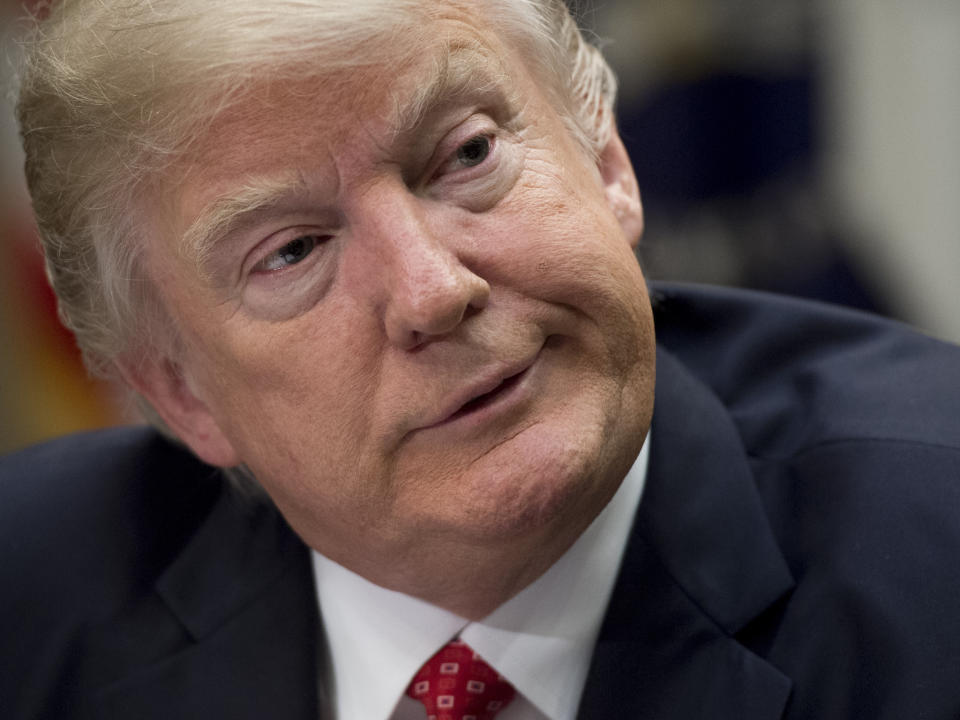Donald Trump’s US tax reform: What we know so far about his 'phenomenal' planned cuts

Global stocks and the dollar rose on Friday after US President Donald Trump said that he was on the verge of announcing the most ambitious tax reform since the Reagan-era.
Mr Trump promised a “phenomenal” tax plan during a meeting in the White House with airline executives.
But he’s so far failed to spell out any details and he hasn’t really helped us understand what will make his changes so “phenomenal” either.
Here’s a look at what we do know:
There seems to be a relatively widespread belief in the US that the country needs to reform its tax system. The last significant tax reform dates back to 1986 and the current system is based on legislation from well before then.
A report by professional services firm PwC published in January argues that the US business tax system in particular has become increasingly out of step and uncompetitive with the rest of the world.
It shows that the US corporate tax rate is now actually the highest among advanced economies.
Experts have for a long time been talking about the “lock-out effect” which stems from high taxes discouraging US companies from repatriating money that they generate abroad. Think of the huge overseas cash piles stashed away by Apple, Google and Microsoft.
The US government’s non-partisan Joint Committee on Taxation has actually estimated that the amount of money generated outside of the US by American companies that has not been brought back home was around $2.6 trillion at the end of 2015, up from about $1.7 trillion in 2010.
Mr Trump’s campaign proposal included cutting the corporate tax rate to 15 per cent from its current 35 per cent level.
To put that in context, the average for the other OECD countries is currently around 24 per cent according to PwC.
For individuals, the President has proposed replacing the current system of seven tax brackets with a more streamlined system of three, where the rates are 12 per cent, 25 per cent and 33 per cent respectively.
So what would it mean for companies and markets if Mr Trump implements those changes?
At this point it's quite hard to say, but what’s certain is that a corporate tax cut of that magnitude would certainly incentivise companies to channel an awful lot of money back home.
Many economists have argued that this could encourage spending and hiring which of course would boost economic growth more generally, but it seems that in the first instant it’s likely to be shareholders who will enjoy the chunkiest payday.
Some analysts have said that many companies are likely to prioritise share buybacks if they get a massive influx of repatriated cash.
They could also look at dividend increases, immediately benefitting existing shareholders most.
One element of the proposed reform is the introduction of a border-adjustment tax, or BAT, on imported goods, as part of a major shake-up of corporate taxation.
Some suggest this would encourage domestic production, in line with Mr Trump’s urge to “Buy American, Hire American”.
For European companies that operate in US, this could have mixed implications.
Companies that have most of their operations based in Europe, or at least outside of the US, could be penalised by the BAT and some could even witness sales becoming unprofitable after the payment of a BAT, according to Barclays economists.
They say that if a European company has its entire supply chain outside of the US and exports goods into the US, it would need to generate a whopping 20 per cent profit margin on those goods even just to break even.
On the other hand, companies that have a bigger proportion of their supply chain in the US could benefit more from the BAT that Mr Trump is proposing than under the current system.
But tax experts say this is all based on a misunderstanding of the economics of a BAT - and that if such a levy was imposed the dollar would automatically appreciate against other countries ultimately leaving the terms of trade of both importers and exporters inside the US and outside the same as before.
Either way, markets seem to like the prospect of an overhaul of the tax system - at least for now.
Major indices on Wall Street on Thursday notched fresh record highs after Mr Trump’s comments.
The benchmark S&P 500 has now risen around 8 per cent since Mr Trump's election win in November.
“Metaphorically President Trump yesterday got his driver out and launched it high into the financial market fairway,” says Jim Reid, a strategist at Deutsche Bank.
Now it just remains to be seen if the President can keep his vehicle on the straight and narrow.
And PwC is also careful to remind everyone that a massive tax reform does not necessarily mean that the US economy is heading for an era of unfettered prosperity.
“Over the longer term, the US economy faces continued structural challenges. Private investment has been sporadic, and new innovations have not led to productivity growth,” they write.
“If productivity continues to grow at a low rate, overall economic growth will remain slow relative to the paces of recent decades, given slower population growth and the retirement of the baby boom generation from the labor force.”
Earlier this month, figures showed that job creation in the US surged in January, but wage growth cooled.

 Yahoo Finance
Yahoo Finance 